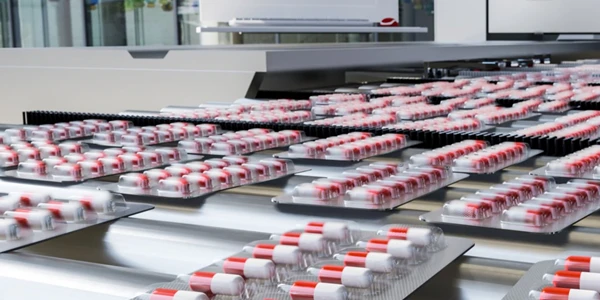3 Equipment Trends that are Advancing the Modern “Smart” Laboratory Concept
Discussion of the “smart” laboratory concept centers around the impact of the digital era on data management and workflow optimization.
The conversation also includes the equipment manufacturers, who have gone to great lengths in creating innovative smart technologies. Here we focus on essential equipment and take a look at 3 technology trends that are driving the evolution of the modern “smart” lab concept.
Important considerations for "smart" laboratory technology
- Sample integrity is critical, particularly for resource intensive research and clinical applications. Modern technologies treat sample security with paramount importance, making use of features and controls for optimized sample management.
- Efficiency is important as well. Features to drive efficiency in instrument performance, energy consumption, and space requirements are all vital to today’s smart lab concept.
- Security and compliance are critical factors as well, particularly in this era of lab accreditation, data tracking, and audit trails.
Three trends in "smart" instrument design
Intelligent adaptive control - Whether sensing temperature, vacuum, or another parameter, adaptive control is an advanced feature to ensure sample safety and process success.
- Temperature Sensing and Mapping allows users to control temperature throughout the cabinet or enclosure, not simply from a single probe point. This permits tighter control and monitoring of temperature through the use of an array of probes, ensuring sample location does not impact sample safety or vitality. Two prominent lab equipment fixtures that benefit from this technology include ultra-low freezers and cell incubators.
- Feedback Control supplants the status quo which has confined users to basic, uncontrollable devices, restricting function to on, off, or a limited number of power settings. Smart devices now have the ability to sense the process, and adapt motor speed, vacuum strength, compressor function, or other parameters as need. Laboratory vacuum systems, for instance, now have the ability to run automated routines, with sensing controls to prevent solvent bumping and sample loss. This ability equates to faster processing, tighter control, and higher yields. Intelligent adaptive feedback control is now a feature of many lab essentials, from water baths to stir bars and more.
Touch-screen interface and remote access - The majority of laboratory essentials are moving to advanced user interface technology – if these instruments haven’t already.
- Touch-screen Technology allows users to interface directly with the device rather than having to navigate through screens via older push button technology. Options are more clearly visible via graphical icons and dynamic illumination. The advantages include easy access to pre-programed or programmable methods, and on the fly changes if necessary. From gas chromatographs to table top centrifuges, touch-screens have appeared on nearly every lab essential.
- Wireless Access enables both convenience and reliability. A lab essential, such as a vacuum system, may be located under a benchtop in order to optimize use of space in the lab. In this case, it may not be feasible to control and monitor the system directly. A wireless remote control or blue tooth connection to a portable control pad or mobile device, frees up both time and space – to ensure lab operations run at top efficiency.
- Mobile Access through devices such as a phone or tablet allows users to monitor device function and event alerts. This is especially important when tight control of environmental conditions is mandatory, such as cell and tissue incubator or ultra-low freezer operation.
Security and documentation - Whether closely tracking device operation or keeping a log of device events, smart laboratory essentials enable users to keep a watchful eye to ensure traceability and compliance.
- Device Tracking is useful in many lab situations. For instance, the preclinical development of a drug candidate in a pharmaceutical lab suffers a major blow by demonstrating an off-target effect on control cells. Having access to the operational log of the incubator or other lab device can help in trouble shooting where things went wrong – whether an effect is a true positive or simply due to instrument instability.
- Data Logging and Compliance are often mandatory in adhering to compliance standards, such as Good Laboratory Practices, Good Manufacturing Practices, CLIA certification, and other lab accreditations.
Of course, there is also the issue of physical device security – and today’s smart lab essentials have features such as code-protected locking mechanisms and access alerts signalled through remote or mobile devices to ensure user security threats are minimized.
Summary
The smart lab of today incorporates many state-of-the-art instrument capabilities designed to streamline operations, efficiency, access, and security. As we move into the intelligent lab of tomorrow, one can foresee many of these features taking a central role in ensuring research integrity – a major area of concern in today’s climate and one that is certain to remain for the foreseeable future.










